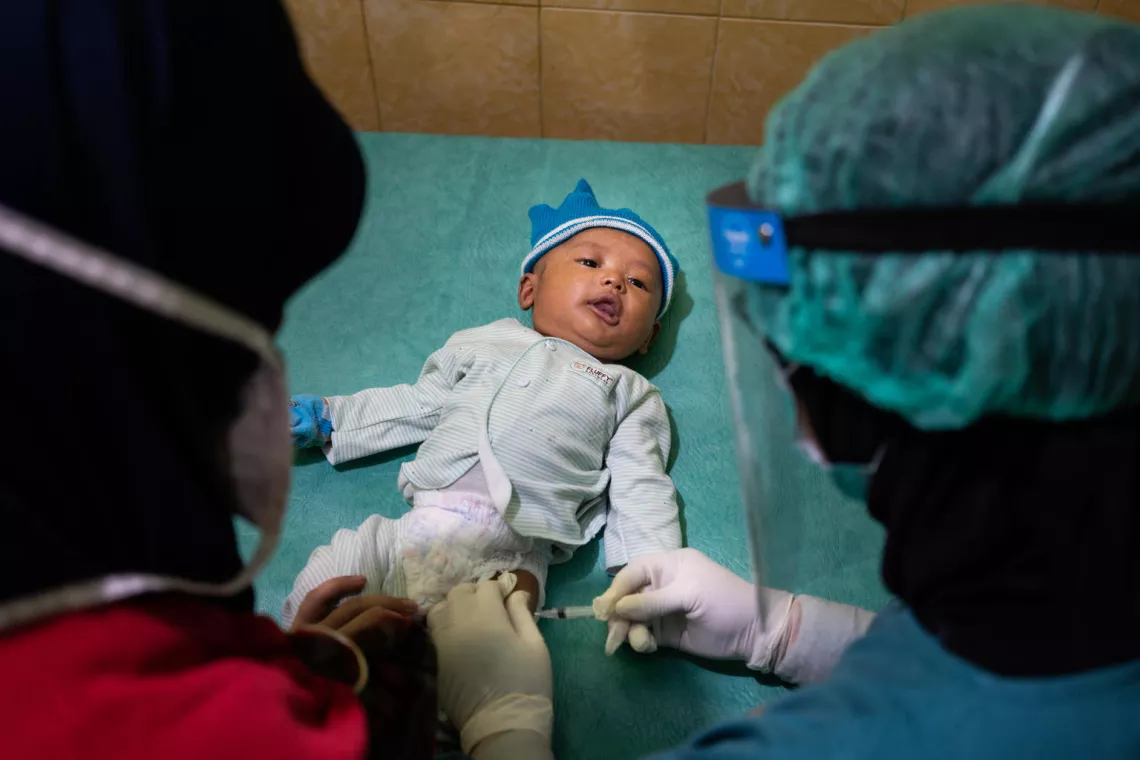Myth or fact? 7 frequently heard statements about immunization
Here are 7 frequently heard statements about immunization that we attempt to demystify.

- Available in:
- English
- Bahasa Indonesia
Immunization saves millions of lives each year and is widely recognized as one of the most successful and cost-effective health interventions.
According to the World Health Organization (WHO), there are still nearly 20 million children unvaccinated and with incomplete vaccination in the world today. As a result, several diseases that can cause disabilities and even fatal, which can be prevented by vaccines such as measles, pertussis, diphtheria and polio have re-emerged in developed and developing countries. Child mortality rate in Indonesia together with other countries in South East Asia region decreased by 64%. between 1990 and 2015.
Reliable information is expected to increase understanding of the benefits of immunization and the number of parents who agree to bring their children to be immunized. Here are 7 frequently heard statements about immunization that we attempt to demystify:
1. Infants or children will always have a fever following immunization
Not true, fever is the body's defense reaction against immunizations given to children. Depending on the condition, sometimes the child will experience mild fever and it can be concluded that his body has a good defense reaction and the vaccine given is not useless.
2. Vaccines cause autism
Not true. The vaccines used in the national immunization program have received a recommendation from NITAG, received pre-qualification from WHO and have passed the test from the Food and Drug Administration.
To date there is no evidence that immunization of any kind causes autism.

3. The content in vaccines is harmful to the body
Not true. Vaccines consist of several ingredients classified as follows:
The main component in vaccines is the antigen. This antigen stimulates the formation of immunity without exposing the body to the disease.
Usually the antigen used is a weakened or killed germ that aims to stimulate the formation of antibodies. These antibodies produce memory cells that will remember how to fight disease and thus allow the body to be protected from the disease in the future.
Additional components, in a low / safe amount, include:
- Stabilizer, serves to maintain vaccine stability when stored in a cold chain system. For example: sucrose, albumin.
- Antibiotics, play a role to help prevent bacterial contamination during manufacture and are used in very small amounts. For example: neomycin.
- Preservative. added to vaccines with multidose packaging to prevent the growth of bacteria and fungi. For example: thimerosal.
- Adjuvants, are added to some vaccines to enhance the specific immune response in vaccinated individuals. For example: Aluminum salt.
4. Breast milk can replace vaccines.
Not true. Breastfeeding and vaccines play a complementary role in building immunity in infants and children.
General disease prevention is obtained by exclusive breastfeeding, along with adequate and balanced nutrition. Specific disease protection against Vaccine Preventable Diseases (VPDs), is obtained through complete basic immunization.
5. Naturally acquired immunity - immunity from the disease itself - is better than the immunity provided by vaccines.
Not true. Natural infections can cause serious, even deadly, complications. This applies even to disease that many people consider mild, such as measles. In addition, natural infections do not necessarily provide long-term immunity, for example in pertussis (whooping cough).

6. Multiple injections are safe for infants or children.
True. When required, health workers will advise multiple injections and this is recommended because it has been proven to be safe, effective, does not interfere with other vaccines and does not increase the risk of illness in children.
The discomfort of receiving multiple injections will only last only for a short time.
Immunization services will continue to adhere to the principles of safe injection, storage of vaccines according to procedures and paying attention to immunization contra-indications.
7. Herd immunity is possible through vaccination
True. In immunization there is the concept of Herd Immunity which can only be formed if the immunization coverage is high and equally distributed throughout a population. It should not be misinterpreted as directly exposing healthy people to infection. Immunization of a high percentage of population will indirectly provide protection for other age groups, so as to reduce rapid community disease spread and prevent outbreaks. The core concept is that only by ensuring a wide coverage of immunization across the targeted population can the entire community be protected.
References:
Success of Vaccines Worldwide: https://www.who.int/news-room/feature-stories/detail/the-vaccines-success-story-gives-us-hope-for-the-future
List of WHO Approved Vaccines: https://extranet.who.int/pqvdata/




